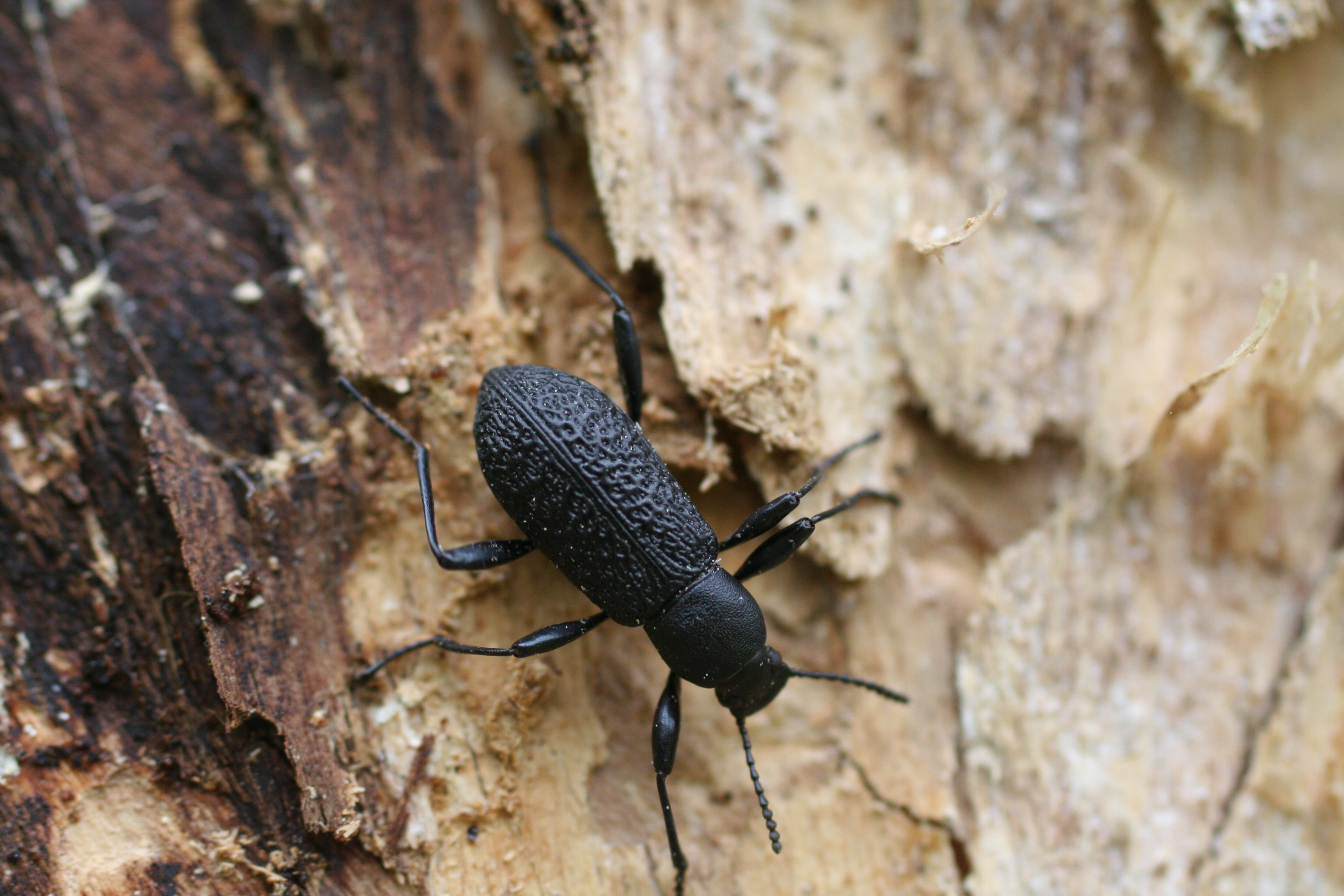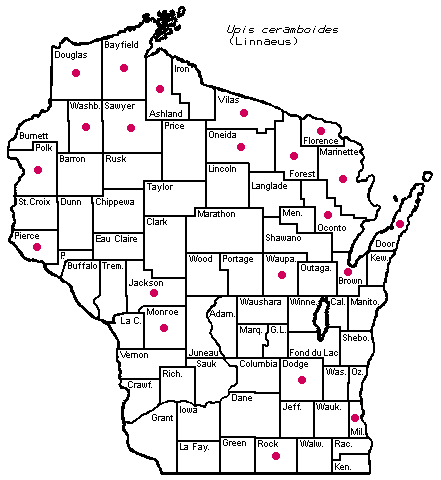
Habitat
Upis ceramboides are found primarily in boreal forests and deciduous trees. None of the Tenebroinidae beetles are known to occupy aquatic environment (Arnett 1985). Many U. ceramboides occupy small spaces under or on bark, dead wood, or in tree stumps. Many U. ceramboides can be found in sun-dried birch or maple wood, or in the sand dunes on the beaches of the Great Lakes (Charney 2010).
During the winter, Upis ceramboides survive the freezing temperatures by burrowing into a dry location in the crevices of trees. These beetles can tolerate unfavorable temperatures down to about 104 degrees below zero. These beetles literally produce anti-freeze molecules inside their cells to prevent freezing of the cells. These anti-freeze molecules are made out of a combination of sugar and fatty acids called, xylomannan. The U. ceramboides have the ability to force water outside their cells when it freezes without damaging their membranes with the help of these anti-freezing mechanisms (Walters 2009).
This species is common in Europe, Asia, Southern Canada, Alaska, and the Midwest area of the United States (Hamilton 1889). In terms of the Midwest, these widespread beetles can be found in southeastern Pennsylvania, Connecticut, North Dakota, Minnesota, New York, Vermont, Maine, and Wisconsin (Dunn 1996).
In the state of Wisconsin, U. ceramboides are found in Sawyer, Douglas, Ashland, Price, Door, Oconto, Jackson, Monroe, Brown, and Milwaukee County (Dunford 2004).
Original photo can be found here

